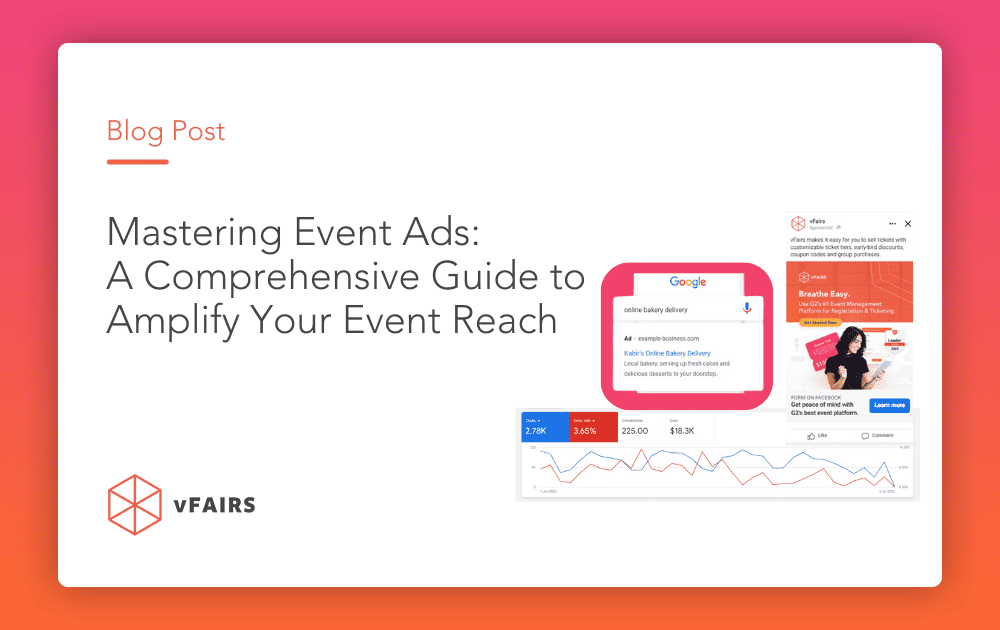In today’s competitive landscape, where events play a crucial role in connecting businesses with their target audience, event organizers are constantly seeking effective strategies to maximize their event marketing efforts. Among the myriad of tools available, event ads have emerged as a powerful means to reach a wide audience, generate buzz, and drive attendance.
In this comprehensive blog, we will explore the ins and outs of event ads, delving into step-by-step instructions, best practices, and real-world examples to empower you with the knowledge and skills needed to supercharge your event promotion.
Let’s dive in and discover the immense possibilities that event ads offer for your event marketing endeavors.
Chapter 1: Introduction to Event Ads
What Are Event Ads?
Event ads refer to targeted advertisements specifically designed to promote events and drive registration and attendance. They are a highly effective form of paid media that allows event organizers to reach a larger and more relevant audience compared to traditional marketing methods. Event ads leverage popular online advertising platforms such as Facebook Ads, LinkedIn Ads, Google Ads, and Bing Ads to deliver tailored messages to potential event attendees.
By strategically utilizing these platforms, event organizers can create compelling ad campaigns that generate awareness, generate leads, and ultimately boost event attendance.
How Do You Advertise Events?
Advertising events involve a strategic and targeted approach to ensure maximum reach and impact. Here are some key steps to effectively advertise events:
Define Your Target Audience
Clearly identify your ideal attendees based on demographics, interests, job titles, and other relevant criteria. Understanding your target audience helps you tailor your ad campaigns and messaging to resonate with them.

Select the Right Advertising Platforms
Research and choose the online advertising platforms that align with your event and target audience. Popular platforms include Facebook Ads, LinkedIn Ads, Google Ads, and Bing Ads. Each platform offers unique targeting options and ad formats, allowing you to reach your desired audience effectively.
Craft Compelling Ad Creatives
Develop attention-grabbing headlines, persuasive ad copy, and engaging visuals or videos. Highlight the key benefits and unique selling points of your event to entice potential attendees. Tailor the messaging to match the tone and preferences of your target audience on each platform.
Set Up Ad Campaigns
Within each advertising platform, set up your ad campaigns by defining campaign objectives, budget, and duration. Use the targeting options available to narrow down your audience and ensure your ads are shown to the most relevant individuals.
Monitor and Optimize Your Campaigns
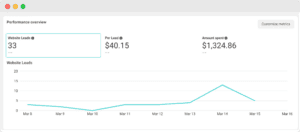
Regularly monitor the performance of your ad campaigns using the analytics provided by the advertising platforms. Track metrics such as impressions, clicks, conversions, and cost per acquisition. Analyze the data to identify areas of improvement and make necessary optimizations to maximize your return on investment (ROI).
Types of Ads: Exploring Different Advertising Channels for Event Promotion
When it comes to advertising events, understanding the different types of ads and their respective benefits can greatly enhance your event marketing efforts. Here are various types of ads commonly used in event promotion:
Search Ads

Search ads appear on search engine result pages (SERPs) when users search for specific keywords related to your event. Platforms like Google Ads and Bing Ads allow you to create text-based search ads that are displayed prominently to potential attendees actively seeking relevant information. By bidding on keywords and optimizing your ad copy, search ads can drive targeted traffic to your event website or registration page.
Video Ads
Video ads have become increasingly popular in event marketing. Platforms like YouTube and social media channels such as Facebook and Instagram offer options to promote your events through engaging video content. Video ads have the advantage of capturing viewers’ attention, conveying your event’s message visually, and creating an emotional connection with potential attendees.
Paid Social Media Ads
Social media platforms like Facebook, LinkedIn, Twitter, and Instagram offer robust advertising options to reach your target audience. Paid social media ads allow you to leverage the platforms’ user data and targeting capabilities to display your event ads to specific demographics, interests, and behaviors. These ads can drive awareness, event engagement, and conversions by leveraging the social nature of these platforms.
Native Ads
Native advertising involves integrating promotional content seamlessly within a platform’s user experience. These ads blend in with the surrounding content, appearing as sponsored posts or recommended articles. Native ads provide a non-disruptive way to capture the attention of potential attendees and can be effective in reaching niche audiences or specific publications’ readership.
Display Ads
Display ads encompass various visual ad formats, including banners, images, and interactive media. These ads are typically placed on websites, mobile apps, or within email newsletters. Display ads offer broad reach and are effective for creating brand awareness and generating interest in your event. Google Display Network and programmatic advertising platforms enable precise targeting and placement options for display ads.
Remarketing Ads
You can run remarketing ads to target individuals who have previously interacted with your event website, registration page, or other digital assets. By using tracking pixels or cookies, you can show tailored ads to past visitors, reminding them of your event and encouraging them to take action. Remarketing ads help reinforce your event’s message, increase conversions, and improve overall event attendance.
Influencer Ads
Influencer ads involve collaborating with influential individuals in your industry or niche to promote your event. Influencers have a dedicated following and can effectively spread the word about your event to their engaged audience. By partnering with influencers through sponsored posts, endorsements, or event partnerships, you can leverage their credibility and reach to boost event awareness and attract attendees.
By understanding the different types of ads available, event organizers can strategically select the most appropriate advertising channels for their target audience, event goals, and budget. A well-rounded approach that combines various ad types can amplify your event marketing efforts and maximize your event’s reach and success.
Chapter 2: Understanding Your Target Audience
Identifying the Ideal Event Attendees
To effectively reach and engage potential event attendees, it is crucial to have a clear understanding of your target audience. Start by identifying the ideal event attendees based on factors such as demographics, interests, job titles, and industry relevance.
Consider the goals and objectives of your event and determine the specific group of individuals who would benefit the most from attending. Understanding your target audience allows you to tailor your event messaging and ad campaigns to resonate with their needs and interests.
Utilizing Buyer Personas for Targeted Ad Campaigns
Creating buyer personas is a valuable exercise that helps you develop a deeper understanding of your target audience. Buyer personas are fictional representations of your ideal event attendees, constructed based on research and insights. These personas encapsulate the characteristics, preferences, motivations, and pain points of your target audience segments.

By creating detailed buyer personas, you can craft targeted ad campaigns that speak directly to the specific needs and aspirations of each persona. This level of personalization enhances the effectiveness of your ad campaigns and increases the likelihood of attracting the right attendees to your event.
Conducting Market Research to Refine Your Targeting
Market research plays a vital role in refining your targeting and optimizing your event ad campaigns. It involves gathering information about your industry, competitors, and target audience.
Conduct surveys and interviews, as well as analyze online data to gain insights into the preferences, behavior patterns, and challenges faced by your target audience. Identify the channels they frequent, the content they engage with, and the keywords they use when searching for event-related information.
This research will help you make informed decisions about which advertising platforms to prioritize, what messaging resonates best, and how to allocate your budget effectively.
By understanding your target audience, utilizing buyer personas, and conducting market research, you can fine-tune your event marketing strategies and create highly targeted ad campaigns. This approach ensures that your event messaging reaches the right people at the right time, maximizing the impact of your advertising efforts and driving higher event attendance.
Investing time and resources in understanding your target audience pays off by attracting a qualified and engaged audience, resulting in a more successful and impactful event.
Chapter 3: Understanding the Potential of Paid Media for Event Marketing
What Is Paid Media?
Paid media refers to advertising efforts on external channels where event organizers pay to promote their events and reach a wider audience. By investing in paid media, event organizers can leverage various platforms such as social media, paid search, pop-ups, and display ads to amplify their event marketing reach and achieve specific goals such as driving event registrations, enhancing brand visibility, and increasing audience engagement.
Common Paid Media Platforms
With over 2.8 billion monthly active users, it offers a vast potential audience to target. Facebook Ads provides detailed targeting options, allowing event organizers to reach specific demographics, interests, behaviors, and even lookalike audiences. With various ad formats available, such as image ads, video ads, and carousel ads, event organizers can create engaging and impactful campaigns to promote their events and drive registrations.
LinkedIn is a professional networking platform that caters to a business-oriented audience. It offers excellent targeting options based on job titles, industries, skills, and company sizes. This makes LinkedIn Ads particularly effective for B2B events or events targeting professionals in specific industries. Event organizers can leverage LinkedIn Ads to raise awareness, generate leads, and drive registrations by creating compelling sponsored content, text ads, or sponsored InMail campaigns.
With Google, event organizers have a variety to choose from including search ads, display ads, and video ads.
- With search ads, event organizers can bid on relevant keywords related to their event, ensuring that their event appears prominently in search engine results.
- Display ads can be placed on relevant websites, mobile apps, and YouTube, while video ads on YouTube provide a visually engaging way to promote events.
Google Ads provides powerful targeting options and precise budget control, making it a valuable tool for event marketing.
Bing
Bing is Microsoft’s advertising platform, offering similar capabilities to Google Ads. While it has a smaller search engine market share compared to Google, Bing Ads can still reach a significant audience. Event organizers can leverage Bing Ads to target specific demographics and interests and run search ads or display ads to promote their events. Bing Ads also integrates with Microsoft Advertising Audience Network, expanding the reach of event campaigns beyond search engine results.
Benefits of Paid Media in Event Marketing
Event organizers often approach paid media campaigns with reservations, as they require a notable investment. Before committing to such campaigns, organizers seek clarity on how dedicating a budget to ads would truly benefit them. They understand the importance of proving the value of their efforts and justifying the expense.
By delving into the potential advantages of paid media, organizers can gain confidence in their decision. They recognize that targeted ads can drive event registrations, expand brand awareness, foster meaningful audience engagement, and more.
Driving Event Registrations
One of the primary objectives of event marketing is to attract a relevant and engaged audience to attend the event. Paid media provides targeted advertising platforms like Facebook Ads, LinkedIn Ads, Google Ads, and Bing Ads, enabling event hosts to reach specific demographics, interests, and behaviors. By leveraging precise targeting options, event organizers can ensure their event ads are seen by individuals who are most likely interested in attending, resulting in higher event registrations and a more qualified audience.
Boosting Brand Awareness
Effective event marketing goes beyond the immediate goal of driving registrations; it also focuses on building brand recognition and visibility. Paid media allows event hosts to expose their brand and event to a broader audience through platforms like social media, search engines, and relevant websites. By consistently promoting the event through compelling ad creatives and strategic placements, event hosts can increase brand recall and establish themselves as leaders in their industry, leading to long-term brand growth and recognition.
Enhancing Audience Engagement
Paid media can significantly enhance audience engagement throughout the event marketing journey. By utilizing various ad formats, such as video ads or interactive content, event hosts can capture the attention of their target audience and create an immersive brand experience. Paid media also enables event hosts to retarget individuals who have shown interest in their event, providing opportunities for personalized engagement and tailored messaging. This helps nurture leads, drive conversions, and encourage audience interaction, resulting in a more interactive and memorable event experience.
Increased Event Attendance
Event hosts can expand their reach beyond organic marketing efforts with paid media, enabling them to tap into a wider audience pool. The targeted nature of paid media ensures that event ads are shown to individuals who are more likely to convert into event attendees. This, in turn, leads to higher event attendance and a larger pool of potential customers, partners, and networking opportunities.
Measurable ROI
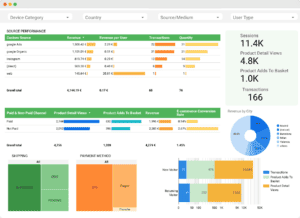
Paid comes with comprehensive analytics and reporting tools that enable event hosts to measure the effectiveness of their campaigns in real-time. Through metrics like impressions, clicks, conversions, and cost-per-acquisition, event hosts can evaluate the performance of their ads and optimize their strategies accordingly. This data-driven approach ensures that event marketing efforts are efficient, accountable, and yield a positive return on investment.
Competitive Edge
In today’s crowded event landscape, standing out from the competition is crucial. Paid media allows event hosts to gain a competitive edge by reaching their target audience more effectively, creating impactful ad campaigns, and building a strong brand presence.
By utilizing paid media strategically, event hosts can position themselves as industry leaders, attract more attendees, and elevate their event experience to new heights.
Chapter 4: Facebook Ads – Reaching a Wide Audience
How to Create Event Ads on Facebook
Setting up event ads on Facebook is extremely simple yet effective for reaching a wide range of audiences. If you follow this step-by-step process, you’ll be all set in no time. Here’s how to get started:
Step 1: Create a Facebook Business Manager Account
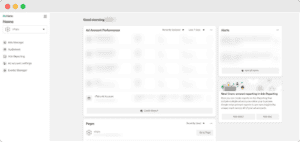
To begin advertising on Facebook, create a Facebook business manager account. This centralized hub allows you to manage your Facebook assets, including ad accounts, pages, and campaigns.
Step 2: Set up a Facebook Page for Your Event

Create a dedicated Facebook page for your event. This page will serve as the central hub for promoting your event, sharing updates, and engaging with your audience.
Step 3: Create Event-specific Facebook Campaigns
Within Facebook Ads Manager, create a new campaign specifically for your event. Select the appropriate campaign objective, such as “Event Responses” or “Traffic,” based on your marketing goals.
Step 4: Define Campaign Objectives and Target Audience
Specify the objectives you want to achieve with your Facebook ads, such as driving event registrations or increasing brand awareness. Define your target audience by selecting demographics, interests, and behaviors relevant to your event attendees.
Step 5: Create Compelling Ad Creatives (text, images, videos)
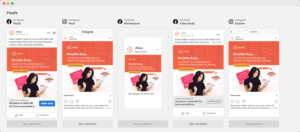
Craft engaging ad creatives that effectively communicate your event’s value proposition. Write compelling ad copy, select visually appealing images or videos, and consider using eye-catching headlines and calls-to-action to capture the attention of potential attendees.
Step 6: Set Up Ad Placements and Budgets
Choose where your ads will be displayed across Facebook’s network, including the Facebook News Feed, Instagram, and Audience Network. Set your budget, either as a daily amount or a total amount for the duration of the campaign, and specify the bidding strategy that aligns with your advertising goals.
Step 7: Launch and Monitor Facebook Ad Campaigns
Once your ad campaign is set up, launch it to start reaching your target audience. Monitor the performance of your ads regularly and make necessary adjustments to optimize their effectiveness. Analyze metrics such as reach, engagement, click-through rates, and conversions to measure the success of your campaigns.
Facebook’s robust targeting options and intuitive ad creation tools enable you to create compelling and targeted event ads that resonate with potential attendees, expanding your event’s reach and maximizing its impact.
Best Practices for Event Ads on Facebook
When creating event ads on Facebook, implementing best practices can significantly enhance their effectiveness and drive better results. Here are some key strategies to consider:
Crafting Attention-grabbing Headlines & Ad Copy
Capture the attention of your target audience by crafting compelling headlines and ad copy. Use clear and concise language to highlight the key benefits and value of attending your event. Incorporate action-oriented language and urgency to create a sense of FOMO (fear of missing out) and encourage immediate action.
Utilizing Compelling Visuals & Videos
Visual content is crucial for grabbing users’ attention in the Facebook feed. Incorporate eye-catching images or videos that showcase the event’s unique aspects, such as guest speakers, engaging activities, or previous event highlights. Ensure that your visuals align with your brand and resonate with your target audience.
Incorporating Social Proof & Testimonials
Leverage the power of social proof by including testimonials or reviews from past attendees or industry influencers. Highlight positive experiences, success stories, or notable achievements related to your event. This helps build credibility, trust, and excitement among potential attendees.
Implementing Retargeting Strategies
Utilize Facebook’s retargeting capabilities to re-engage individuals who have shown interest in your event but have not yet registered. Create custom audiences based on website visitors, engagement with your Facebook Page or event, or interactions with previous ads. Develop tailored ad campaigns specifically designed to remind and persuade them to take the desired action.
Analyzing Ad Performance & Optimizing Campaigns
Regularly analyze the performance of your event ads to identify strengths, weaknesses, and areas for improvement. Pay attention to metrics such as click-through rates, conversion rates, and cost-per-action. Test different variations of ad elements, such as headlines, visuals, and targeting options, and optimize your campaigns based on the data insights you gather.
By following these best practices, event organizers can maximize the impact of their event ads on Facebook. Craft attention-grabbing headlines and compelling ad copy, utilize captivating visuals and videos, incorporate social proof and testimonials, implement retargeting strategies, and continuously analyze and optimize campaign performance. These strategies will help drive better engagement, registrations, and overall success for your event.
LinkedIn Ads: Targeting Professionals and Decision-Makers
How to Create Event Ads on LinkedIn
LinkedIn provides a professional networking platform that can be highly effective for event marketing. To create an event ad on LinkedIn, follow these steps:
Step 1: Create a LinkedIn Campaign Manager Account
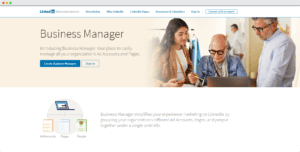
Start by creating a LinkedIn Campaign Manager account, which serves as the hub for managing your ad campaigns. Set up your account by providing the necessary information about your business or organization.
Step 2: Define Campaign Objectives & Target Audience

Before creating your event ad, clearly define the objectives of your campaign. Determine whether your goal is to drive event registrations, increase brand awareness, or generate leads. Next, identify your target audience based on factors such as job titles, industries, company size, and geographic location. Understanding your target audience helps ensure that your event ad reaches the most relevant professionals.
Step 3: Select Ad Formats
LinkedIn offers various ad formats to promote your event, including sponsored content, sponsored InMail, and text ads. Sponsored content appears in users’ news feeds and can include images, videos, or carousel formats.

Sponsored InMail allows you to send personalized messages directly to the LinkedIn inboxes of your target audience. Text ads are displayed on the right side of users’ LinkedIn feed.
Step 4: Set Up Ad Targeting Options
LinkedIn provides advanced targeting options that enable you to refine your audience based on specific criteria. You can target professionals based on their job titles, industries, company size, skills, and more. Select the targeting options that align with your event’s target audience to ensure your ad reaches the right individuals.
Step 5: Configure Ad Budgets & Bid Strategies
Set your ad budget and bidding strategy within LinkedIn Campaign Manager. Determine how much you are willing to spend on your campaign and select the bidding option that suits your goals, whether it’s cost per click (CPC) or cost per impression (CPM). LinkedIn also provides a daily or total budget option to control your spending.
Step 6: Launch & Monitoring LinkedIn Ad Campaigns
Once you have completed all the necessary steps, review your campaign settings and ensure everything is accurate. Launch your LinkedIn ad campaign and regularly monitor its performance.
LinkedIn Campaign Manager provides insights into impressions, clicks, and conversions, allowing you to make data-driven optimizations as needed. Continuously analyze your campaign’s performance and adjust targeting, ad creatives, or bidding strategies to maximize your event’s reach and impact.
Best Practices for Event Ads on LinkedIn
To maximize the effectiveness of your event ads and leverage the platform’s unique features, it’s important to follow best practices.
Craft Compelling Headlines & Ad Copy for Professionals
Tailor your ad headlines and copy to appeal to LinkedIn’s professional audience. Focus on the specific benefits and value your event offers to professionals in your industry. Use clear and concise language to grab attention and entice professionals to learn more or register for your event.
Leverage LinkedIn Targeting Options for Precise Audience Reach
Take full advantage of LinkedIn’s targeting options to reach your desired audience accurately. Utilize criteria such as job titles, industries, company size, skills, and geographic location to ensure your event ads are seen by the professionals most likely to be interested in your event. Targeting the right audience increases the chances of generating meaningful engagement and registrations.
Use Visually Appealing Images & Videos
Engage your audience with visually appealing images or videos that reflect the essence and value of your event. Use high-quality visuals that capture attention and align with your event’s branding. Incorporate images of industry-specific activities, event speakers, or past event highlights to create interest and excitement among professionals.
Highlight Industry Influencers & Thought Leaders
Leverage the power of industry influencers and thought leaders to boost the credibility and appeal of your event. Feature endorsements or quotes from influential professionals who will be attending, speaking, or endorsing your event. This can significantly enhance your event’s reputation and attract professionals who value industry expertise and insights.
Measure Ad Performance & Make Data-driven Optimizations
As you continue running your ad campaigns, pay attention to metrics such as click-through rates, engagement rates, and conversions. Test different ad variations, headlines, or targeting options to identify what resonates best with your target audience. Continuously refine and optimize your campaign based on the insights gained from ad performance data.
By following these best practices, event organizers can create highly effective event ads on LinkedIn. Implementing these strategies will help you reach the right professionals, generate meaningful engagement, and drive registrations for your event.
Chapter 5: Google Ads – Capturing Intent with Search Advertising
Getting Started with Google Ads
Google is a powerful advertising platform that can significantly boost your event marketing efforts. To get started with Google Ads, follow these steps:
Step 1: Create a Google Ads Account
Begin by creating a Google Ads account. Visit the Google Ads website and sign up with your existing Google account or create a new one. Provide the necessary information about your business or organization to set up your account.

Step 2: Set Up Campaign Goals & Budget
Define your campaign goals for your event ads on Google Ads. Is your objective to increase event registrations, drive website traffic, or boost brand awareness? Determine your budget and allocate funds accordingly to ensure you can achieve your goals effectively.
Step 3: Select Campaign Types
Google Ads offers various campaign types, including search, display, and video. For event marketing, consider utilizing search campaigns to target users actively searching for relevant event-related keywords.
Display campaigns can also be effective for increasing brand exposure by displaying ads on relevant websites. Video campaigns can be used to engage your audience with visually appealing event-related videos on platforms like YouTube.
Step 4: Conduct Keyword Research for Event-related Searches
Perform thorough keyword research to identify the most relevant and effective keywords related to your event. Consider using tools like Google Keyword Planner to find keywords with high search volume and relevance. Focus on event-specific keywords, such as event names, industry-related terms, and location-specific keywords.
Step 5: Craft Compelling Ad Copy & Extensions
Create compelling ad copy that captures the attention of your target audience and encourages them to take action. Craft concise and engaging headlines and descriptions that highlight the unique aspects and value of your event.
Utilize ad extensions, such as sitelinks and callouts, to provide additional information and enhance the visibility and effectiveness of your ads.
Step 6: Launch & Monitoring Google Ad Campaigns
Once you have set up your campaign, review all settings and ensure they align with your goals and target audience. Launch your Google ad campaign and monitor its performance regularly.

Use Google Ads’ reporting and analytics tools to track important metrics like impressions, clicks, click-through rates, and conversions. Make data-driven optimizations to your campaign based on the insights gathered, such as adjusting bids, refining keywords, or testing different ad variations.
Best Practices for Event Ads on Google
Utilize Relevant Keywords & Negative Keywords
Selecting the right keywords is crucial for targeting users who are actively searching for event-related information. Conduct thorough keyword research and choose keywords that align with your event, industry, and target audience.
Additionally, use negative keywords to exclude irrelevant searches and prevent your ads from appearing to users who are unlikely to be interested in your event.
Create Engaging Ad Headlines & Descriptions
Craft compelling ad headlines and descriptions that capture the attention of users and entice them to click. Highlight the unique selling points and value of your event. Use strong calls-to-action and emphasize urgency or exclusivity to drive immediate action. Experiment with different messaging to see what resonates best with your audience.
Incorporate Ad Extensions
Leverage ad extensions to enhance the visibility and functionality of your event ads. Location extensions can display your event’s address, making it easy for users to find you.
Call extensions allow users to call directly from the ad, increasing the likelihood of conversions. Sitelink extensions enable you to include additional links in your ad, directing users to specific pages on your website, such as registration or event details.
Implement Conversion Tracking & Remarketing
Set up conversion tracking to measure the effectiveness of your event ads. Track actions such as event registrations, ticket purchases, or newsletter sign-ups. This data allows you to evaluate the success of your campaigns and make informed decisions for optimization.
Additionally, implement remarketing campaigns to target users who have previously shown interest in your event, increasing the chances of converting them into attendees.
Analyze Campaign Performance & Optimize for Better Results
Regularly analyze the performance of your event ads on Google Ads. Pay attention to metrics such as click-through rates, conversion rates, and cost per acquisition. Identify trends, insights, and areas for improvement. Test different ad variations, landing pages, and targeting options to optimize your campaigns for better results. Continuously monitor and refine your campaign to achieve maximum impact.
By following these best practices, you can create highly effective event ads on Google. These strategies will help you maximize your event’s visibility, attract relevant attendees, and achieve your event marketing goals.
Chapter 6: Bing Ads – Expanding Reach with Microsoft Advertising
Getting Started with Bing Ads
Bing Ads, now known as Microsoft Advertising, provides a valuable platform to expand your event marketing reach beyond Google. To get started with Bing Ads, follow these steps:
Step 1: Create a Microsoft Advertising Account
Visit the Microsoft Advertising website and create an account. You can sign up using your existing Microsoft account or create a new one. Fill in the necessary information about your business or organization to set up your account.
Step 2: Import Campaigns from Google Ads
If you already have campaigns running on Google Ads, consider importing them into Microsoft Advertising to save time and effort. This feature allows you to import your Google Ads campaigns directly into Microsoft Advertising, making it easier to manage your campaigns across platforms. This step is optional but can be beneficial if you want to expand your reach to Bing’s audience quickly.
Step 3: Define Campaign Goals & Budgets
Clearly define your campaign goals for your event ads on Bing Ads. Determine whether you want to increase event registrations, drive website traffic, or boost brand visibility. Set a budget that aligns with your goals and allocate funds accordingly to ensure you can achieve your desired results.
Step 4: Set up Ad Groups & Keywords
Organize your event ads into ad groups based on relevant themes or target audiences. Conduct keyword research specific to Bing’s search engine to identify the most relevant keywords for your event. Use Bing’s keyword research tools or import keywords from your existing campaigns. Ensure that your keywords align with your event, target audience, and campaign goals.
Step 5: Create Compelling Ad Copy & Extensions
Craft compelling ad copy and extensions that entice Bing users to click on your ads. Write clear and persuasive headlines and descriptions that highlight the unique aspects and benefits of your event. Utilize ad extensions, such as sitelink extensions and call extensions, to provide additional information and enhance the visibility and effectiveness of your ads.
Step 6: Launch & Monitor Bing Ad Campaigns
Once you have set up your ad groups, keywords, ad copy, and extensions, review your campaign settings and ensure everything is accurate. Launch your Bing ad campaigns and regularly monitor their performance.

Use Microsoft Advertising’s reporting and analytics tools to track important metrics such as impressions, clicks, conversions, and cost per conversion. Optimize your campaigns based on the data and insights you collect to improve performance.
Best Practices for Event Ads on Bing
Leverage Bing’s Unique Audience Demographics
Bing attracts a slightly different user demographic compared to other search engines. It tends to have a higher share of older and more affluent users, making it a valuable platform for reaching specific target audiences.
Consider tailoring your event ads to align with Bing’s audience characteristics. Highlight aspects of your event that resonate with this demographic, such as professional development opportunities, networking events, or exclusive experiences.
Optimize Ad copy for Bing’s Search Network
Craft ad copy that is tailored to Bing’s search network. Conduct keyword research specific to Bing to identify relevant keywords with sufficient search volume. Incorporate these keywords naturally into your ad copy, headlines, and descriptions.
Ensure that your ad copy speaks directly to Bing users, addressing their needs, interests, and pain points. This customization can lead to higher engagement and click-through rates.
Utilize Ad Extensions for Improved Visibility
Take advantage of Bing’s ad extensions to enhance the visibility and effectiveness of your event ads. Utilize sitelink extensions to direct users to specific pages on your website, such as event registration or speaker details. Use call extensions to provide a direct phone number, allowing users to contact you directly for inquiries or registrations.
By utilizing these extensions, you can provide additional information and increase the chances of attracting clicks and conversions.
Chapter 7: Launch Your Event Ads
You’re all set to launch your event ad campaigns now. Before you go here’s a refresher:
- Continuous optimization and adaptation are crucial in paid media campaigns for event marketing success. Regularly monitor and analyze the performance of your ads, make data-driven adjustments, and refine your targeting and messaging strategies.
- Paid media offers a powerful way to maximize event marketing success by driving event registrations, increasing brand awareness, and enhancing audience engagement.
- Facebook Ads, LinkedIn Ads, Google Ads, and Bing Ads are popular and effective platforms for event advertising, each with its own unique features and targeting options.
- Understanding your target audience and utilizing buyer personas can greatly improve the effectiveness of your paid media campaigns. Conduct market research to refine your targeting and create personalized ad experiences.
- Best practices for event ads on different platforms include crafting attention-grabbing headlines and ad copy, utilizing compelling visuals and videos, incorporating social proof and testimonials, implementing retargeting strategies, and analyzing ad performance for optimization.
- Allocating budgets strategically, conducting A/B testing, implementing retargeting, and integrating paid media with other marketing channels can help maximize the return on investment (ROI) for event marketing campaigns.
Chapter 8: Takeaways
Event ads are a powerful tool in your event marketing arsenal, but they are just one piece of the puzzle. To ensure comprehensive event promotion, make sure to explore various marketing strategies and channels.
To dive deeper into effective event marketing techniques, check out our comprehensive event marketing guide. It provides valuable insights and strategies to help you maximize your event’s success. Discover expert tips, insights, and proven strategies to unlock the full potential of your events and create memorable experiences for your audience.

